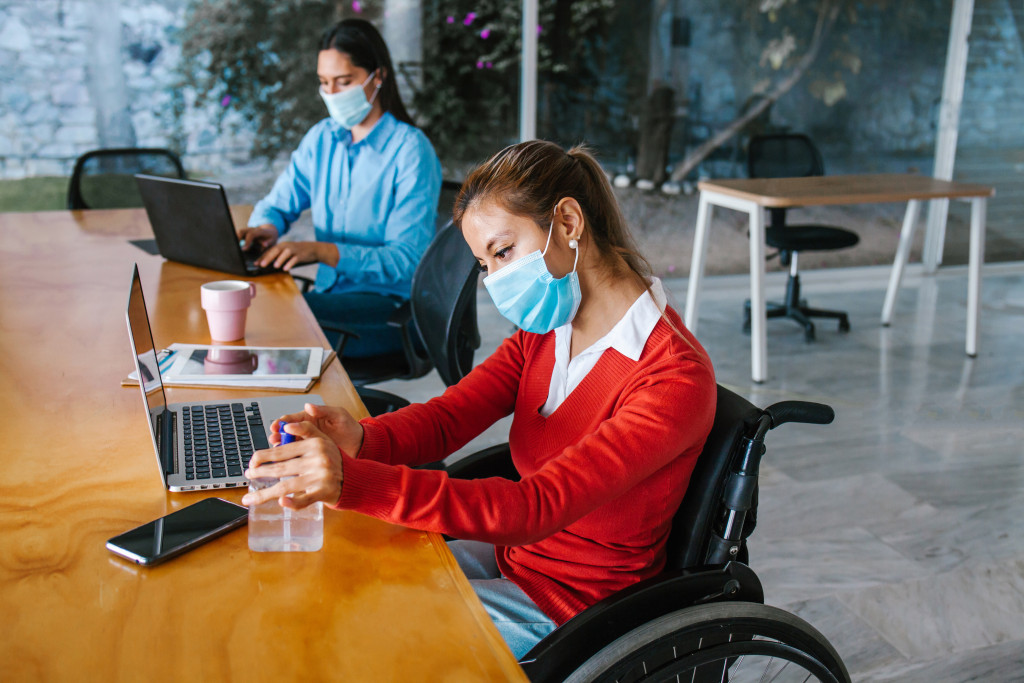The pandemic has affected our lives significantly, but one of its most heinous effects is how it brought about the “pandemic posture.” This essentially refers to the perpetually slouched posture that many of us have adopted due to being stuck at home or forced to sit in front of our computers for work purposes.
This has a heinous effect because when we are forced to adopt this posture for long periods, the muscles and connective tissues around the spine can become strained. This can lead to chronic back pain, neck pain, or shoulder pain later on down the road if not appropriately addressed promptly.
A Sitting Pandemic
The average office worker spends between five and seven hours a day sitting, with many spending up to 12 hours or more a day in front of a computer or other screen-based device. And the work-from-home setup that has become more prominent in recent times has exacerbated this. This can result in various musculoskeletal issues, including neck and back pain, carpal tunnel syndrome, and even high blood pressure.
The most common problem is neck pain due to prolonged repetitive strain on the neck muscles and cervical spine. For example, several studies indicate that 50% of American workers aged 25 to 64 years report having experienced some type of neck or shoulder pain during the past three months.
There is also a perception that some people are becoming more sedentary, which can cause significant problems for those who have been exercising regularly to maintain good physical health and avoid disease and disability throughout their working lives and beyond.
Fighting the Pandemic Posture
Do Yoga
Yoga is great for relaxation, stress relief, strengthening muscles, and improving posture — all of which can prevent back pain in the future if done right! So how do you know if you’re doing it right? It all comes down to your own personal preferences and limitations, but some general rules should be followed when practising yoga at home:
Most people aren’t flexible enough to practice full-body poses like downward dog or warrior pose without having back problems occur before long, so follow the “start with two, finish with two” routine as outlined below:
- Start with cat/cow pose (neutral spine position)
- Return to neutral spine position
- Start with a side angle.
By following this tip, you’ll find that you can do home yoga better and manage body pain better.
Position Your Computer Properly

The ideal computer position is having the monitor at eye level with the keyboard lower than that. This way, your eyes are not having to move upwards to see what’s on-screen, and you can focus on typing and other tasks below that position. The height of a chair will also be essential to consider. The higher its position, the better it is for you, as it minimizes neck strain when working for extended periods.
If you’re sitting too far away from your monitor, it will be difficult for you to see all the details on the screen and thus get better visibility of it while working on your computers or laptops. This can lead to headaches that can cause vision problems such as eye strain, blurry vision, and even headaches after a long time using these devices if the conditions of viewing aren’t good. This is on top of craning your neck forwards and hunching your back. So make sure your computer is ergonomically positioned, and you’ll feel a significant reduction in body pain.
Exercise at Home
While you may not be able to go to the gym right now, you can still get your exercise in and stay active. Here are some things you can do at home:
- Use an exercise ball (or books) to help strengthen core muscles and work on improving your balance and posture.
- Try standing up from your couch ten times each hour as a way to improve your overall range of motion and build strength.
- Take a walk around your neighbourhood, house, office, or even the mall parking lot.
- Have fun with your kids, family, friends, and pets. Play is an effective form of exercise, not to mention it’s a great way to take a mental break.
Most Importantly, Visit a Doctor
Of course, if any problems or pain persist, it’s best to see a doctor to know what’s going on. You might need a physical therapist or treatment for scoliosis or any pre-existing conditions that have been exacerbated by pandemic posture.
There is no better guarantee than a doctor’s diagnosis, and to ensure your road to recovery, you need professional input. Take the necessary steps to ensure you address any issue.







